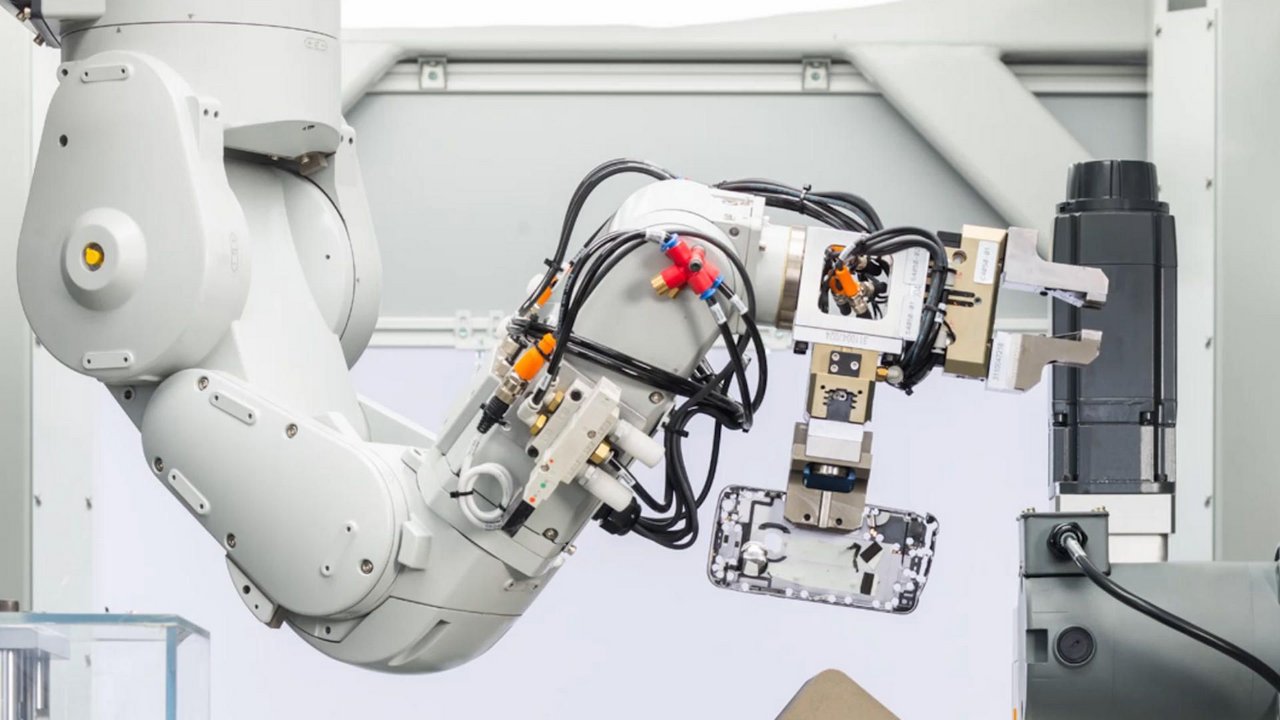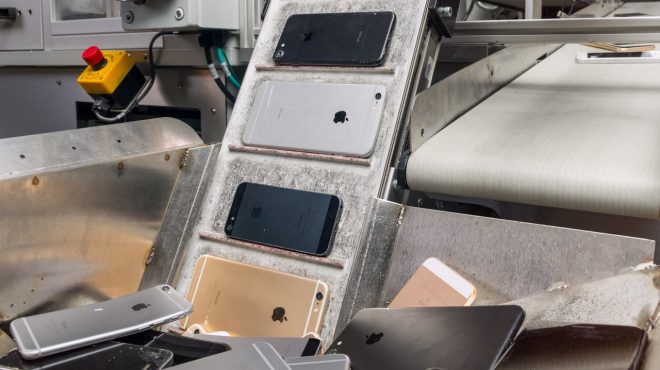Apple is giving customers new ways to recycle their iPhones. It’s part of the company’s lofty long-term goal of using only recycled or renewable materials to make its products.
On Thursday, Apple released its 2019 Environment Report outlining the steps it is taking to help protect the environment from the negative impacts of its own business.
Last year, the company unveiled an iPhone-recycling robot named Daisy. It now has two of these robots. They can each take apart 1.2 million used iPhones per year and recover their valuable materials.
Apple says that thanks to new upgrades, Daisy can also disassemble 15 different types of iPhones. It can take 200 phones apart per hour.
(Before Daisy, Apple used a recycling robot named Liam. Daisy is about one-third of the size of its predecessor and has more advanced capabilities).

For the first time, materials recovered by Daisy are making their way into new Apple products this year. For example, aluminum the robot extracts from an older iPhone is being reused in new MacBook Air laptops, according to the company.
“We’re almost trying to remake the current supply chain for technology because right now that has not been one of the goals of technology,” Lisa Jackson, Apple’s vice president of environment, policy, and social initiatives said.
“Tech is all about getting innovations into the hands of potential customers as fast as possible, and I don’t think a lot of folks are considering part of that innovation to be using recycled material.”
Apple is trying to make it easier for people to get their old iPhones to Daisy robots, too. For example, customers can return eligible models to Best Buy stores in the United States or to retailer KPN in the Netherlands, and they will be taken apart by Daisy. Users can also turn in devices for recycling at Apple stores or online via Apple’s Trade-In program.
The company is also opening a new “Material Recovery Lab” in Austin, Texas. The 9,000-square foot facility will work to find new ways to recycle using robotics and machine learning. Engineers and academics will work with the lab on testing and research using giant electronic-waste recyclers.
In 2016, the world produced 44.7 million metric tons of e-waste, and only 20% of it was recycled properly, according to a 2017 report from the United Nations University and other organizations. E-waste includes discarded electronics such as TVs, cell phones and refrigerators.
Apple says it refurbished over 7.8 million of its devices in 2018 and helped reroute more than 48,000 metric tons of e-waste from ending up in landfills.
The company is taking a second look at the elements and raw materials it uses to make its products and researching ways they can be recycled. For example, recycled cobalt is being used to make batteries for new Apple products.
Last week, Apple said that 44 of its suppliers are committed to using 100% renewable energy. Last year, the company announced that all of its retail stores, data centers, and corporate offices now run on 100% clean energy themselves.
“It’s going to be a ton of work,” Jackson said of Apple’s environmental goals. “We’re really trying to get materials into our products that are recycled more and more. We hope other companies do the same. It’s a big goal.”
CNN
 Alghadeer TV Alghadeer TV
Alghadeer TV Alghadeer TV

